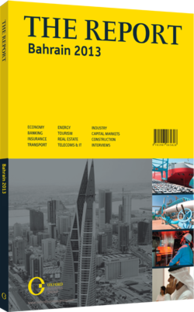Expanded treatment: Plans to diversify the range of facilities are moving forward
The country’s health care system dates back to the early 1900s when the Victorian Memorial Hospital was built. The new hospital was shortly followed by the addition of the American Mission Hospital, which was completed in 1902 and provided a total of 24 beds, according to Bahrain’s Ministry of Health (MoH). Since then medical care has become increasingly accessible in Bahrain as health infrastructure has expanded. Recently completed or planned medical facilities are addressing a range of health needs, and the public sector is playing a major part in the roll-out of infrastructure projects.
The MoH has set a goal to ensure that there is one health centre in the kingdom for every 20,000 residents. In accordance with this goal, the ministry has announced that a pair of new health centres will open in the near term. The first facility, which is scheduled to open sometime in 2013, will be located in the Northern Province, while the other will set up operations in the north-eastern governorate of Muharraq and will be opened in 2014.
FURTHER INITIATIVES: Another MoH initiative includes the construction of two new dialysis centres in an effort to ensure that every governorate in Bahrain contains such a facility. An intensive care unit (ICU) is expected to open in early 2013 at the government’s primary hospital, the Salmaniya Medical Complex (SMC), a 1068-bed, multi-specialty facility. The MoH has also reported that it plans to develop a blood disease unit at the SMC.
The MoH also plans to expand infrastructure with the possible construction of a centre that will focus on the treatment of diabetes, which has become a serious health problem in Bahrain as well as the wider GCC region. A study recently published by the International Diabetes Foundation (IDF) noted that the prevalence of diabetes in Bahrain in 2012 was more than 18%. Notably, the IDF calculates that more than 72,000 Bahrainis have diabetes but have not yet been diagnosed. There is already a diabetes facility in Bahrain. The privately owned Gulf Diabetes Specialist Centre recorded nearly 4000 outpatient visits in 2011, according to MoH data. However, there appears to be region-wide demand for lower-priced diabetic care.
CANCER TREATMENT: Similar to other GCC countries, the incidence of cancer in Bahrain is also on the rise. A number of health care facilities in the kingdom, such as the SMC and the privately owned Bahrain Specialist Hospital, already offer cancer treatment. Oncology care options should increase, however, with the completion of a cancer centre at the King Hamad University Hospital (KHUH). A relatively new hospital, the KHUH was inaugurated in early 2012 and has 311 beds, in addition to a range of speciality care facilities.
Construction on the new oncology centre is set to begin in 2013. With cancer specialists from the Bahrain Defence Force (BDF) Hospital and the SMC providing guidance on the development of the facility, the KHUH has announced that it will be seeking additional assistance from oncology experts in Turkey and France. It is also likely that an agreement will be signed with France involving the transfer of technology to the KHUH.
According to the National Health Regulatory Authority, the Bahraini medical industry’s regulator since 2009, the KHUH’s oncology unit will provide 120 beds. The centre is expected to have the capacity to serve the country’s cancer treatment needs until 2030, and local firm Mazen Al Umran Consulting Engineers has won a bid to design the unit. While the KHUH is affiliated with the military BDF Hospital, the KHUH provides medical care to the general public.
Further expansion plans at the KHUH include the development of a laboratory capable of producing radioactive material. This will be used for positron emission tomography (PET) scans, which are typically used to determine if a cancer is spreading. The facility is scheduled to be finished in September 2013 and will house a type of particle accelerator known as a cyclotron. Currently Bahrain imports radioactive material for PET scans. While this process has some drawbacks, it is a sign of promising advancements in the sector.
You have reached the limit of premium articles you can view for free.
Choose from the options below to purchase print or digital editions of our Reports. You can also purchase a website subscription giving you unlimited access to all of our Reports online for 12 months.
If you have already purchased this Report or have a website subscription, please login to continue.

